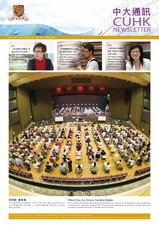In English expository writing, clarity and directness are much valued. The first sentence of a paragraph, known as the topic sentence, should let the reader know what is in store without much ado.
In the prologue to his Autobiography, Bertrand Russell, a mathematician who won the Nobel Prize in Literature, summarizes for the reader the story of his life. The opening paragraph begins with this sentence:
Three passions, simple but overwhelmingly strong, have governed my life: the longing for love, the search for knowledge, and unbearable pity for the suffering of mankind.
The next three paragraphs are devoted to explication of why and how he pursues these passions: love, knowledge, and pity for mankind (in that order), and with what results. The respective topic sentences in the second and third paragraphs are:
I have sought love, first, because it brings ecstasy—…
With equal passion I have sought knowledge.
Then, in the next paragraph, Russell adds a sentence connecting and contrasting the aforesaid passions with the one next appearing before introducing the topic sentence:
Love and knowledge, so far as they were possible, led upward toward the heavens. But always pity brought me back to earth.
Not only a fine illustration of the use of the topic sentence, Russell’s prologue of 320 words also contains many gems for the aspiring writer.
Editor
* Bertrand Russell, ‘What I have Lived for’, in Autobiography (London: Routledge, 1993).

































































































































































社交網路書籤